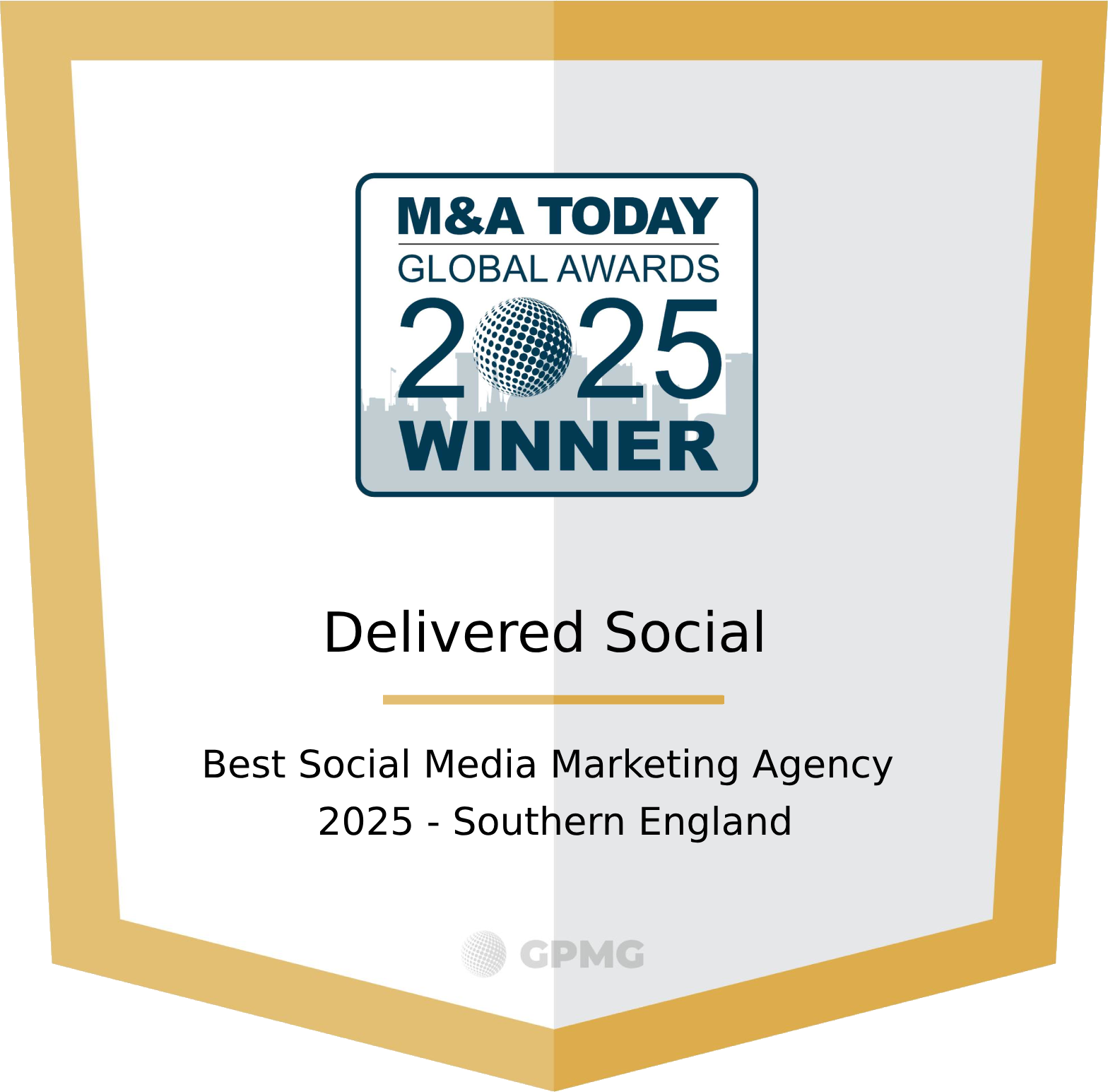
Every business wants more leads, but not every website is set up to turn visitors into customers effectively. If your website isn’t consistently generating high-quality leads, you’re leaving money on the table. The good news? With the right lead generation tips for your website, you can transform it into a powerful tool that works for you 24/7.
Website lead generation isn’t about just driving traffic, it’s about attracting the right audience and guiding them through a conversion journey. Many businesses make the mistake of focusing solely on getting more visitors without considering how to turn those visitors into prospects.
Here’s what makes a website great at lead generation:
- Clear and compelling calls-to-action (CTAs) that encourage immediate action.
- Easy-to-use lead capture forms that don’t overwhelm visitors.
- SEO-driven content marketing to attract high-intent users.
- Trust signals like testimonials and case studies to build credibility.
In this guide, we’ll cover the best lead generation tips for your website, including:
- How to optimise your site for conversions.
- The role of SEO and content marketing in generating new enquiries.
- Essential lead capture tools and strategies.
By implementing these proven website lead generation strategies, you’ll create a system that attracts, nurtures, and converts visitors into paying customers. Ready to take your website to the next level? Let’s dive in.
What is Website Lead Generation & Why Does It Matter?
The design team at delivered Social specialise in creating websites that generate leads. Your website isn’t just a digital storefront—it should be a lead generation machine that works around the clock to bring in potential customers. But what exactly does that mean? Website lead generation is the process of attracting, capturing, and nurturing visitors into potential new customers who are interested in your products or services.
How it Works
Every person who visits your website is at a different stage in the buying journey. Some are ready to make a decision, while others are just exploring. Your job is to guide them toward taking action, whether that’s signing up for a freebie, booking a consultation, or requesting a quote.
The best lead generation tips for your website focus on removing friction and making it easy for visitors to take the next step. A few proven methods include:
- Offering valuable lead magnets (e.g., free guides, discount codes, webinars).
- Creating simple, easy-to-complete lead capture forms.
- Using strong call-to-actions (CTAs) that direct visitors to take action.
Why is it important for Your Business?
A website without lead generation is like a shop with no salesperson, people might browse, but they won’t buy. Here’s why having a strategy to generate new enquiries is essential:
- It builds a predictable pipeline of potential customers.
- It reduces reliance on paid ads by generating organic leads.
- It increases customer trust through engaging, value-driven content.
- It allows you to nurture leads over time, turning visitors into paying customers.
The Role of Your Website in Generating New Enquiries
Your website should be more than just a place for visitors to scroll through, it should be optimised to convert. That means:
- Clear navigation so visitors can easily find what they need.
- Mobile-friendly design for users browsing on phones or tablets.
- Fast loading times (because slow sites lose leads).
- Trust-building elements like reviews, case studies, and testimonials.
Lead generation isn’t about luck, it’s about strategy. If your website isn’t converting visitors into prospective customers, it’s time to rethink your approach. In the next section, we’ll explore exactly how to optimise your website for maximum conversions.

Why You need Lead Generation Tips For Your Website Optimisation
Your website should do more than just provide information, it should actively convert visitors into prospects. If people are landing on your site but leaving without taking action, something isn’t working. The good news? There are simple changes you can make to optimise your website for lead generation and boost conversions.
1. Improve Your Website’s User Experience (UX)
If your website is cluttered, slow, or difficult to navigate, visitors won’t stick around long enough to become leads. A well-structured website with a clear layout, intuitive navigation, and fast-loading pages keeps people engaged and makes it easier for them to take action.
What to do:
- Ensure your site loads in under three seconds (use Google’s PageSpeed Insights to check).
- Use simple, clear menus so visitors can find information quickly.
- Optimise for mobile users, since over 60% of web traffic comes from smartphones.
2. Create High-Converting Call-to-Actions (CTAs)
CTAs are what drive visitors to take action, whether that’s signing up for a newsletter or booking a consultation. If they’re weak or hidden, your website won’t generate new enquiries.
What to do:
- Make CTAs stand out visually using contrasting colours.
- Use persuasive action words like “Claim Your Free Trial” instead of “Submit”.
- Place CTAs strategically throughout your website (not just at the bottom of a page).
3. Streamline Your Lead Capture Forms
People hate filling out long forms. If your form asks for too much information upfront, potential customers will abandon it before submitting.
What to do:
- Keep forms short and simple (name, email, and one optional field).
- Offer an incentive (e.g., a free download, webinar, or discount) to encourage sign-ups.
- Use progressive profiling, start with minimal details and collect more information over time.
4. Leverage Landing Pages for Targeting New Enquiries
Landing pages convert higher than regular web pages because they’re designed for one purpose—capturing leads.
What to do:
- Create dedicated landing pages for different lead generation campaigns.
- Remove distractions (e.g., navigation bars) to keep the focus on the CTA.
- A/B test headlines, CTAs, and layouts to find what works best.
By implementing these lead generation tips for your website, you’ll create a site that doesn’t just attract visitors—it turns them into potential customers. Next, we’ll look at how SEO and content marketing can help bring in even more leads.
SEO & Content Marketing For Generating New Enquiries
“Is it worth it?”. This is one of the questions we’re asked most, when it comes to SEO. Getting visitors to your website is the first step, but attracting the right visitors is what really matters. That’s where SEO and content marketing really come into play. By optimising your website for search engines and creating valuable content, you can bring in high-quality leads who are already interested in what you offer.
1. Target High-Intent Keywords
SEO is more than just ranking high on Google, it’s about ranking for keywords that attract potential customers. Some searches are just for information, while others signal buying intent. Your focus should be on keywords that lead to conversions.
What to do:
- Use tools like Google Keyword Planner or SEMrush to find keywords with high commercial intent.
- Focus on long-tail keywords (e.g., “best website lead generation strategies” instead of “lead generation”).
- Optimise page titles, meta descriptions, and headers with lead-focused keywords like “Lead Generation Tips For Your Website.”
2. Create Content That Converts
A blog isn’t just a place to share updates, it’s a powerful tool for website lead generation. A well-written blog post can educate, build trust, and capture leads.
What to do:
- Write solution-based content (e.g., “How to Optimise Your Website for More Leads”).
- Include lead magnets (free downloads, webinars, or exclusive content) in blog posts.
- Make blog posts engaging and easy to scan (use subheadings, bullet points, and bold key phrases).
3. Build Landing Pages for Targeted Traffic
A blog post educates, but a landing page converts. When you drive traffic to your site, make sure visitors land on a page designed to capture leads.
What to do:
- Create dedicated landing pages for different services or lead magnets.
- Use strong headlines and persuasive CTAs to increase conversions.
- Keep forms short and simple, fewer fields = higher completion rates.
4. Leverage Video & Visual Content
At Delivered Social we’re big on video and visuals. Not everyone prefers reading long-form content. Videos, infographics, and interactive elements make your content more engaging and increase time on page, which improves SEO.
What to do:
- Embed explainer videos, customer testimonials, and how-to guides.
- Use visual CTAs (buttons, pop-ups, banners) to grab attention.
- Repurpose blog content into short videos for social media.
SEO and content marketing work hand-in-hand to attract, educate, and convert visitors into leads. In the next section, we’ll explore the best lead generation tools to help automate the process and improve efficiency.

Lead Generation Tips For Your Website.
Best Tools & Strategies To Generate New Enquiries
Having the right tools in place can make a massive difference in how efficiently your website generates leads. The right combination of lead capture tools, automation, and tracking software can turn casual visitors into high-quality leads with minimal effort.
1. Live Chat & Chatbots for Instant Lead Capture
Not everyone wants to fill out a form. Some visitors prefer real-time conversations to get their questions answered before they take action. Live chat and AI-powered chatbots can engage visitors instantly, qualify leads, and even collect contact details for follow-ups.
Best Tools:
- Drift – AI-powered chatbot that interacts with visitors and captures leads.
- Tidio – Offers live chat with automated responses and lead collection.
- Intercom – A conversational marketing tool that nurtures leads through chat.
2. Exit-Intent Popups & Lead Capture Forms
Many visitors leave a website without taking action, but well-timed popups can convince them to stay. Offering an incentive like a free guide, discount, or webinar can turn an exit into a conversion.
Best Tools:
- OptinMonster – Customisable popups triggered when a visitor is about to leave.
- Sumo – Simple lead capture forms designed for increasing email sign-ups.
- Hello Bar – Sticky bars that encourage lead generation without disrupting UX.
3. CRM & Lead Tracking Software
Once you’ve captured leads, you need a structured way to manage them. A Customer Relationship Management (CRM) system ensures no lead falls through the cracks.
Best Tools:
- HubSpot CRM – Free tool that tracks leads and automates follow-ups.
- Zoho CRM – AI-powered lead scoring and automation for better lead nurturing.
- Pipedrive – Simple, intuitive lead tracking and pipeline management.
With these lead generation tools and strategies, your website will be optimised to attract, engage, and convert visitors effortlessly. Next, let’s tackle the most common lead generation mistakes businesses make, and how to avoid them.
Frequently Asked Questions (FAQs)
1. What is lead generation and why is it important?
Website lead generation is the process of attracting, capturing, and nurturing potential customers through your website. It ensures that your website isn’t just a digital brochure but a 24/7 sales tool that actively collects leads. Without a lead generation strategy, you risk losing potential business to competitors who are optimising their websites to capture interest and drive conversions.
2. How can I increase my conversion rate?
To convert more visitors into leads, you should:
- Simplify your lead capture forms, ask for only essential details to reduce friction.
- Use persuasive CTAs like “Get Your Free Guide” instead of “Submit Form”.
- Speed up your website, slow loading times kill conversions.
- Incorporate social proof with reviews, testimonials, and case studies.
- Offer lead magnets such as eBooks, webinars, or exclusive discounts in exchange for contact details.
3. What are the best tools to generate new enquiries?
Some of the most effective tools include:
- HubSpot CRM – for tracking and automating lead management.
- OptinMonster – for creating high-converting popups and forms.
- Tidio & Drift – for live chat and chatbot-driven lead capture.
- Google Analytics – for tracking lead behaviour and optimising pages.
4. Is SEO or paid advertising better?
Both strategies have their place. SEO and content marketing generate sustainable, long-term leads, while paid ads provide immediate traffic but require continuous investment. The best approach is to combine both, using organic methods for long-term growth while leveraging paid ads for short-term boosts.
5. What’s the most common mistake businesses make with lead generation?
This is the one thing we constantly tell our new clients. The biggest mistake is not following up on captured leads. Many businesses generate leads but fail to nurture them through email marketing, remarketing, or personal outreach. Without a follow-up strategy, even the best lead generation techniques will fail to convert visitors into paying customers.
Interested In Working Together?
Introducing Delivered Social. We're The Most-Rated Digital Agency In Surrey & Hampshire – We've Got To Be Doing Something Right.
Delivered Social is a digital marketing agency with one mission—to help businesses grow. We're famous in Guildford and Portsmouth for our social clinics. We believe in free advice. We build lasting relationships because our team prides itself on being helpful, which our clients appreciate.
If you are looking for a new website or an agency to manage your social media presence, we can help.
If you need something slightly different, here's a super handy list of all our services, or you can always email us.























